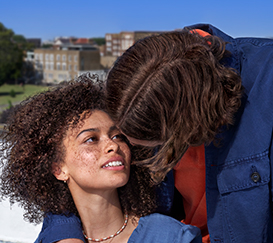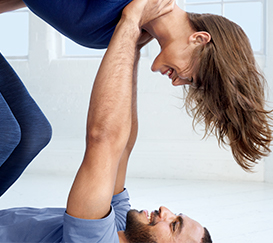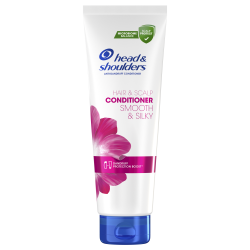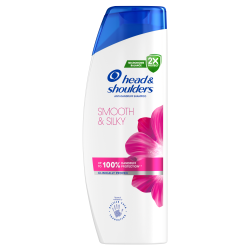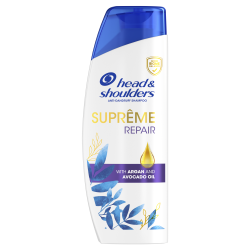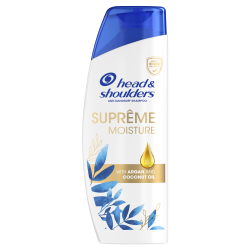Hair care tips and tricks
- In this article:
- Go to sectionCan not shampooing actually be good for your hair
- Go to sectionHow does shampoo work?
- Go to sectionWhat about natural shampoo alternatives?
- Go to sectionHow to keep hair clean
- Go to sectionWhat your hair really needs
- Go to sectionFeeding your hair
- Go to sectionWeekend recovery hair routine in 6 steps
- Go to sectionRoutine for damaged hair
- Go to sectionCurly hair routine
Get tips and advice on everything from how to wash your hair to keeping greasy hair under control with useful articles from the world’s #1 shampoo.*
Whether you’re wondering how often to wash your hair, how to care for heat-damaged hair or how to treat black hair, then we can help.
Check out the latest advice from our experts who have spent more than 50 years developing shampoo and hair care products to tackle a whole range of issues.
Washing and styling your hair
We all wash our hair – but ever wondered what the best way to do it is? There are plenty of different routines people advocate, but it all depends on what you need.
For example, if you’re looking to care for heat-damaged hair you need a hair care regime deigned to bring life back to your hair.
Or if you’re playing sports regularly you’ll need a different routine to keep your hair and scalp fresh and clean from day to day.
Check out our hair washing and styling tips
Dealing with greasy or oily hair
Greasy hair is absolutely normal – we all produce natural hair oils. But when that oil builds up, it can leave your hair looking greasy and potentially lead to scalp issues. But the good news is, there are plenty of ways to tackle it from choosing the right type of shampoo to making a few simple changes to your hair care regime.
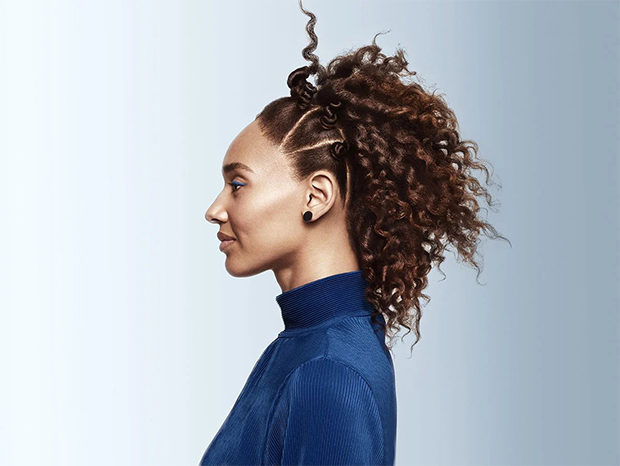
Textured/black hair tips
Ethnicity has a big effect on the way you care for your hair as every hair type is different from the next, requiring different care and attention.
And if you have textured hair, you’ll know a typical routine or products designed for Caucasian hair won’t necessarily work for you.
Find out what makes hair types different and how to embrace your natural hair with routines and products designed to help you get the right amount of moisture in your hair to keep it looking great.
Can not shampooing actually be good for your hair
The natural health movement has brought itself to the arena of hair care with the no shampoo movement. Proponents are dropping their shampoo bottles and opting for ways of cleaning hair that they believe will be healthier.
At its most basic, this means washing hair with water only, but can include:
Using a mixture of bicarbonate of soda and apple cider vinegar
Using exotic alternatives as eggs, certain types of clay, or rye flour
Advocates often recommend the daily use of a boar bristle brush
Followers of these methods claim that these are gentler alternatives to shampooing hair, and without harmful chemicals they claim are found in shampoos.
Let’s examine those claims.
How does shampoo work?
The major claim made by no powers is based around the ingredients found in shampoo.
The theory is that these chemicals are actually toxic, and strip the scalp of its natural oils.
This scenario presumes the alternatives used are gentler, allowing your scalp to maintain its oils at a natural level.
However, this theory ignores how shampoo actually works.
In fact, modern shampoos are carefully formulated to be kind to your scalp.
Shampoos work by binding to the excess oils on your scalp, and dissolving them in water so they can be rinsed away.
It is actually important to remove excess oil - left unchecked, oil build-up will bind your hair in clumps, and attract dust, pollen, pollution and other dirt.
Another problem with oil build-up is that it changes and becomes oxidized, breaking down into substances that smell bad and may make your scalp itchy or flaky.
Simply using the right amount with the correct frequency will prevent your scalp from being completely stripped, while keeping your hair clean and fresh.

Shampoos carry other benefits as well:
protect your hair from damage and keep it healthy
condition to keep your hair smooth and detangled
protect your scalp’s natural pH balance
make your hair smell great (not like apple cider vinegar!)
What about natural shampoo alternatives?
The other problem with the no poo trend lies in the alternatives used to try and keep hair clean.
The most popular natural cleaning routine is a combination of bicarbonate of soda for shampoo, and apple cider vinegar for conditioning.
Bicarbonate of soda is great for baking, but for hair it has several important drawbacks:
It is highly alkaline – it has a much higher pH than your skin. This means that it easily upsets the pH balance of your scalp, and may cause issues.
The imbalance created by using it regularly may actually damage your hair
It is not a good oil absorber or an effective cleaner- leaving behind a lot of the dust, dirt, and odour that shampoo removes
Apple cider vinegar is an acid; it has a lower pH than your skin.
So far, there is no real evidence that it has any benefit to the hair. Because it’s acidic, it may help to dissolve mineral deposits from hard water on hair surface, but it could also disrupt your skin’s natural pH balance and lead to issue.
Other alternatives bring their own problems too.
Eggs can coat your hair with far too much protein, while clays are ineffective at removing dirt and oils properly.
How to keep hair clean
Without a doubt modern shampoos are still the best way to keep hair clean and healthy. If you do still suffer from oily scalp even with shampoo, don’t dig into the kitchen cupboard- just choose the right shampoo for oily hair.
These are specifically formulated to clean deep and remove oils for a clean you can really feel.
Aside from that advice, using the right amount of shampoo is important:
a cherry tomato sized amount for short or thin hair
a walnut sized amount for longer and thicker hair
This will help keep your hair healthy, your shampoo will last longer, and you won’t have to figure out what to do about eggshells in the shower.
What your hair really needs
What a lot of the tips boil down to, however, is moisture – either minimising how much moisture your hair loses during the day, or general tips on how to put more moisture into your hair.
Alongside this is the need for nutrients. Moisture is the foundation for healthy hair, whilst nutrition feeds your scalp from the inside out.
So, let’s have a look at what you can do to satisfy your hair care needs.
Keeping hair moisturised
When your hair dries out, you’ll find that it becomes brittle, dull and prone to breakage.
This is because your hair relies on moisture to stay strong and healthy – and to maintain a glossy shine.
There are a couple of ways to do this:
A good shampoo and conditioner, like the Head & Shoulders Supreme range, helps moisturise your hair when you wash it
Some substances, like coconut oil or the argan oil found in the Supreme range, can boost your hair’s moisture
Taking care of your scalp will ensure that your hair stays healthy too, so it’s important to ensure that the products will moisturise your scalp as well
If you find that your scalp’s getting itchy, make sure to use a soothing product like Head & Shoulders Supreme Moisture to help combat these symptoms.
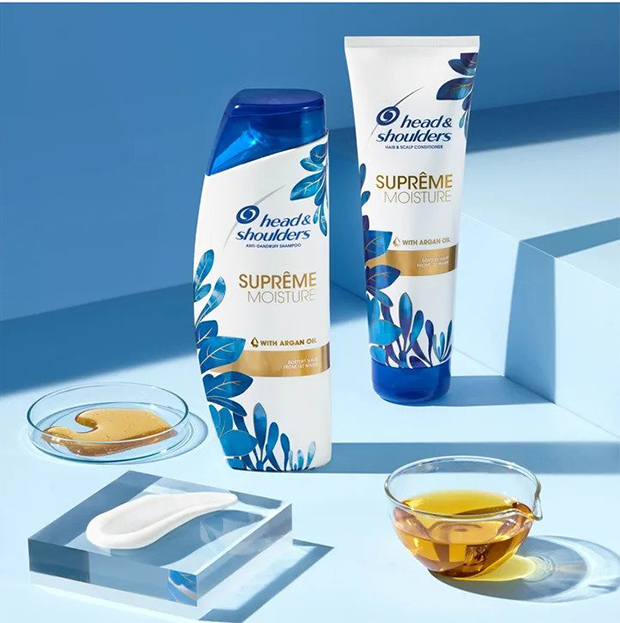
Feeding your hair
Your hair relies on specific nutrients to grow and stay healthy.
Some of these needs can be satisfied by your diet: Protein, vitamins A, C and E, as well as minerals and Omega 3 fatty acids should all be included in your meals.
You can further supplement your diet with hair products as well. The new Head & Shoulders Supreme Moisture shampoo & conditioner contains Argan Oil. Argan oil is well known for carrying many of the vitamins in your hair needs as well as fatty acids.
If your hair is nourished, but still giving you problems, it may be worth looking at your haircare routine.
Caring for your hair
Many styling methods can damage your hair: excessive heat styling and tightly pulled styles can both damage or dry out your hair.
To avoid this, give your hair a break from these kinds of styling every few weeks. Trimming split ends will also ensure that your hair is healthy from root to tip – split hair can travel up the hair as well, so it’s important to keep an eye on this.
Keeping your hair healthy and smooth doesn’t have to be complicated. All it takes is a little understanding of what your hair needs.
Weekend recovery hair routine in 6 steps
After a long week at work – and a few nights out on Friday and Saturday – your hair is probably feeling the strain of being styled with heat and hair products. Luckily, Sunday’s the perfect time to settle in for a detox. Follow our weekend hair routine and take advantage of a chance to relax.
It’s true – that Instagram post of you with perfectly tonged tresses on Friday night looks awesome. But unfortunately heat styling and product build-up do have a negative effect on your hair’s health. Even something as simple as backcombing can damage the outer layer of your hair, leaving its defences weakened.
But don’t worry – all is not lost. Sunday is the perfect time to rest and rejuvenate, taking care of your body, hair and scalp as well as your general wellbeing. Our pampering and refreshing Sunday routine will have you looking rested and radiant in time for Monday morning!
1. Start by washing your hair properly
There’s no better way to relax than soaking in some bubbles after a long week, so get those bath taps running and let us fill you in on a secret. You may think you’ve been washing your hair perfectly, but a poor technique can actually be responsible for several common hair and scalp problems.
Sometimes it pays to go back to basics and make sure you know how to wash your hair properly.
You might even want to add a step to your routine on Sundays, lathering twice with shampoo to make sure all that product-build-up is cleared away. Head and Shoulders Smooth and Silky Shampoo deeply nourish your hair and scalp from roots to tips and leaves your hair softer from the first wash.
2. DON’T JUST SHAMPOO – USE CONDITIONER TOO!
So, you’ve shampooed, and your hair is feeling clean and smelling great. The next step is to pamper your hair and scalp by adding a moisturizing anti-dandruff conditioner to your routine.
Apply your conditioner from root to tip. Take the time to really allow it to work –leave it on a few extra minutes, like a mask. Head & Shoulders Smooth and Silky conditioner take care of both your hair and scalp, deeply moisturizing your skin and effectively targeting the causes of dry scalp, as well as giving you beautifully moisturized hair.
In fact, now’s the perfect time to add in a restoring face mask to take care of the skin on your face while Head & Shoulders looks after the skin on your scalp.
3. Dry your hair with care
To keep your hair in good shape, avoid damaging habits which leave your hair feeling rough and brittle.
Instead of rubbing your hair dry try patting it or wrapping it in a T-shirt. The fibres are even more absorbent than a towel’s, and it’ll save you lots of drying time – which is more time to grab a cup of tea and curl up with a book or your favourite TV show!
While air drying is ideal when it comes to your hair health and is a smart choice on Sunday when you have a little more time than usual, we also have some tips for how to reduce styling damage if you can’t resist the blow dryer.
Remember that heat damage gets worse if you hold your hairdryer very close to your hair. At very high temperatures, the water in your hair can actually boil causing swelling and damage to the hair fibre’s inner cortex, which leads to breakage.
So, remember to keep the temperature on your device low, hold it around 15cm from your head and keep it moving continuously to avoid damage.
4. Straighten your hair without damage
Nothing quite says “polished” like a perfectly styled mane of hair, but unfortunately hair styling tongs and straightening irons almost always rely on heat to get your hair to retain its shape.
Excessive heat can cause the water inside your hair fibre to boil, causing lasting damage. Luckily, there are ways to avoid causing heat damage to your hair. If you use styling tools, then our damage-preventing tips are an absolute must.
5. Rest and rehydrate
Hydration is key for your skin, hair and your general wellbeing.
Lots of factors – including cold winter weather – can dry out your scalp. One of the reasons that preventing dandruff is so important is that a healthy scalp is more able to stay hydrated, even when faced with chilly temperatures. So, make sure your shampoo and conditioner offer scalp protection as well as moisturizing benefits.
When it comes to your hair, stress can be an aggravating factor for dandruff. So, take the time out now and not only will you feel more relaxed, your hair will thank you for it.
You can avoid dry skin by applying a rich moisturizer to your face and body. And remember to drink plenty of water – or if that’s too boring, try a caffeine-free infusion. Tea made with mint or fruits will hydrate you and feel like a healthy treat.
6. Do what makes you feel good
Now you’re looking great, use your free time on Sunday to look after yourself. Whether it’s meeting friends for a Sunday night get-together or you just want to be prepped for the world’s best Monday morning, set aside some time to feel your best.
Use this time to catch up on that TV series you’ve been wanting to watch, pick up that hobby you’ve been neglecting, or just grab a book and a cup of tea.
Finally, head to bed early to catch up on any sleep you lost in the week. The quality of your sleep is heavily linked to your self-esteem and optimism, so make sure you’re starting the week ahead with the right frame of mind by catching those ‘Z’s when you can.
Routine for damaged hair
Any number of factors can lead to hair damage, from your style routine to a scalp condition.
It’s no wonder, then, that it can seem hard to know where to start when you’re trying to reverse the damage.
To make things easier, we’ve put together a few tips that you can add to your routine for damaged hair to get it back on the right track.
Starting off right
The first step you’ll want to focus on is hair repair.
Hair is not alive, which means it’s unable to repair itself – so any damage that’s already occurred is there to stay.
Happily, while you can’t actually make your hair heal itself, there are things you can do to make it look and feel better while you focus on growing strong, healthy hair to replace it.
Moisture is the key in this case: look for products that use the terms ‘moisture’, ‘smooth’ or ‘repair’. Shampoos and conditioners with these terms tend to be higher in moisturizing ingredients.
And on that note, it’s important that you don’t skip the conditioner – a good conditioner will help smooth your cuticles (the outer layer of hair), and make your hair look healthier.
Because damaged hair is vulnerable to further harm, you’ll also want to take steps to protect your hair while styling.
A two-prong approach will come in handy here: avoid heat styling where you can, and use a protectant when you do.
You can also work a leave-in conditioner or finishing oil for that extra bit of moisture – paying special attention to the ends of your hair, where the most damage is likely to be.

Setting up future defense
Once you’ve fixed your immediate problem, it’s time to take your damaged hair treatment further.
Start with your scalp; the condition of your scalp dictates the health of your hair to a far greater degree than you might think.
That means you need to take care of this little-seen part of your head.
Luckily, a good scalp care shampoo and conditioner help moisturize your scalp as much as it does your hair, so you can keep them both in great shape.
From there, you’ll want to take care when you get out the shower: dry your hair as gently as possible, and avoid styling it until it’s completely dry.
This is important, because wet hair is actually far weaker than you’d expect – it can easily be stretched and broken if you’re not careful.
And really, that’s the key to treating hair damage: take care of your scalp, moisturize, and be gentle.
Curly hair routine
Curly hair doesn’t just look different from straight hair – it acts differently, grows differently, and even has its own unique needs.
So, any old hair routine won’t be enough to keep your curly hair looking good.
Why curls are different
Like we’ve said, curly hair comes with several unique characteristics in its growth and structure.
This starts at the follicles: curly hair grows from the scalp at an angle, and the follicles are actually asymmetrical.
These factors affect the structure of the hair.
Where straight hair tends to be fairly even, curly hair has keratins (the protein that makes up the bulk of your hair’s structure) concentrated on the inner side of the curls.
This has consequences for the health of your hair; curly hair tends to dry easily, as it’s difficult for the natural oils of your scalp to make their way down the strand.
Luckily, a good routine can help with this.
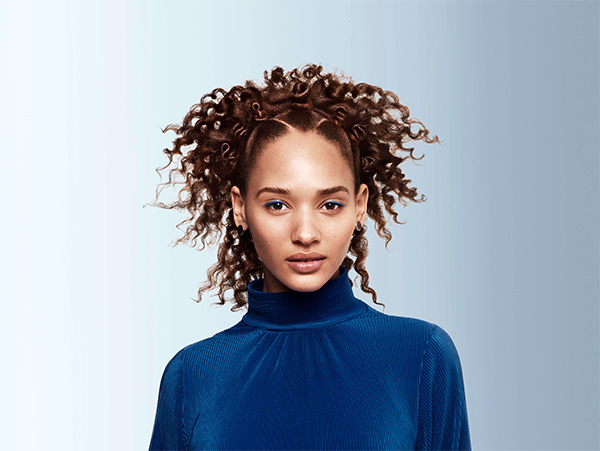
Curly hair routine
When caring for curly hair, you’re generally looking to achieve two things – provide your hair with moisture, and texture.
Start off by washing with a moisturizing shampoo like Head & Shoulders Royal Oils shampoo. Curly hair is naturally prone to tangling, and you’ll want to avoid this as much as possible.
Do so by massaging your scalp in an up and down motion when washing your hair, as opposed to a circular one.
After you’ve shampooed (to get rid of scalp oils that can build up and cause problems), use a moisturizing conditioner that will help your locks stay properly hydrated.
Take the opportunity to detangle any snarls that may be showing up.
This is an ideal time to do so, as your hair will be lubricated by the conditioner – that means less breakage and ultimately less frizz.
When it comes to drying, skip the towel and wrap your hair in an old t-shirt instead; this allows your hair to dry without causing any knotting.
Ideally, you’ll want to let your hair air dry once you’ve squeezed out most of the water. This will help the curl keep their shape, and add texture.
All that’s left after that is to look forward to a great hair day.
* P&G calculation based on Nielsen sales information July 2012 - June 2013

